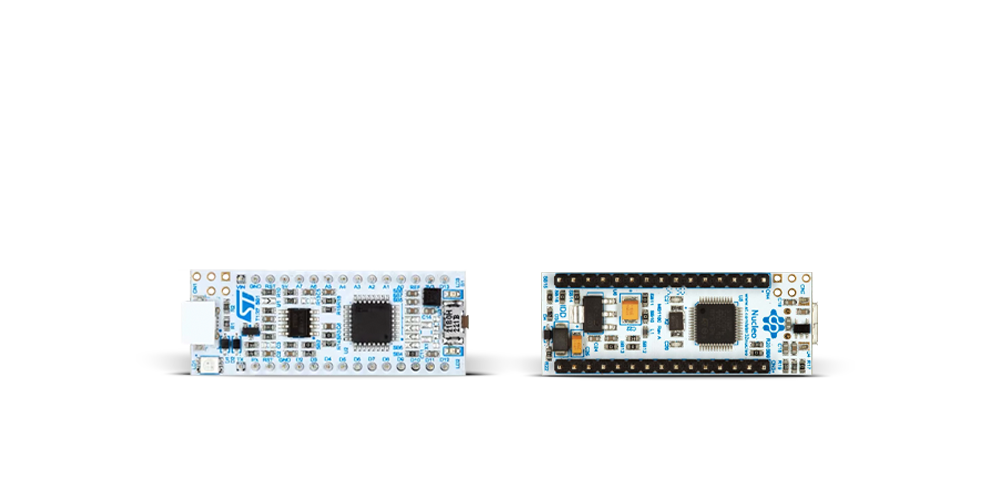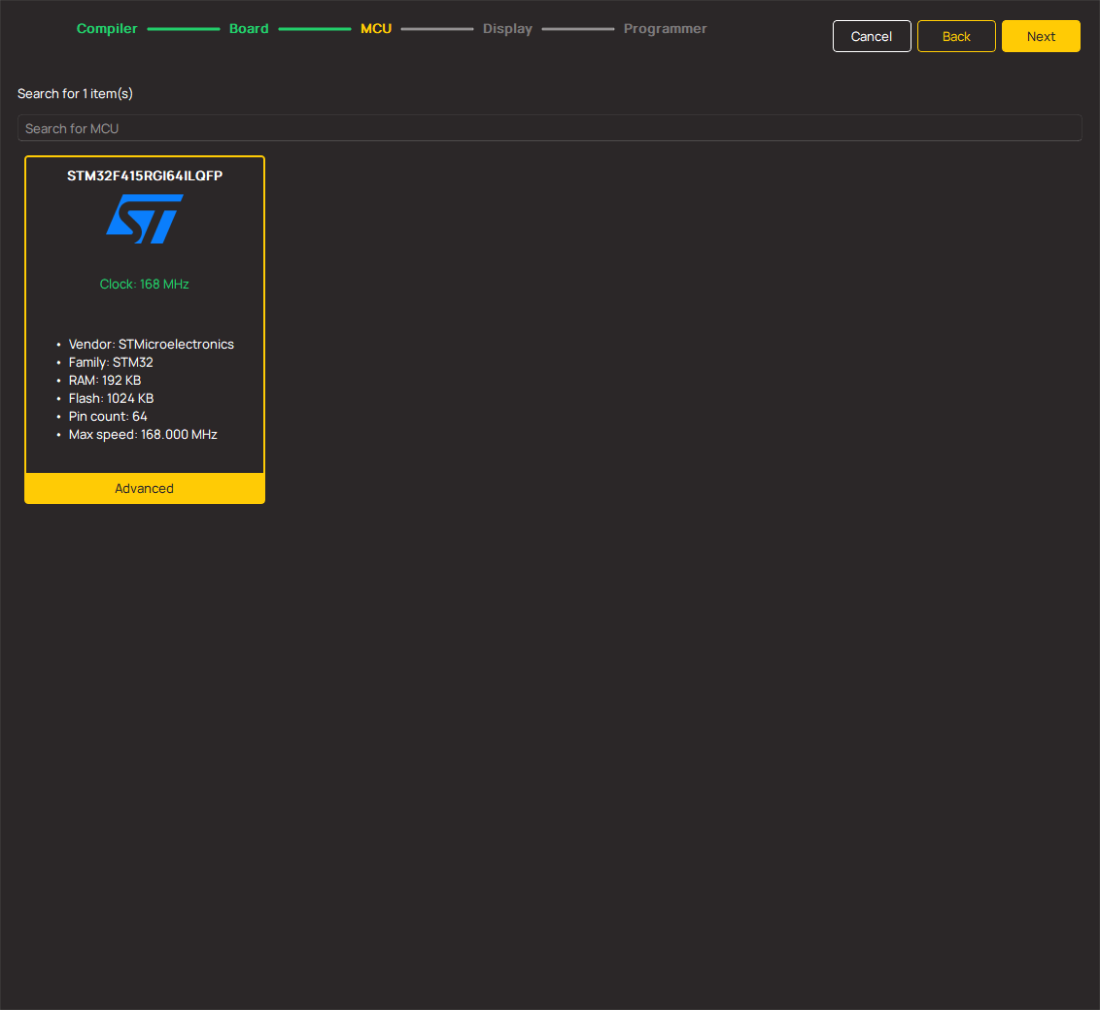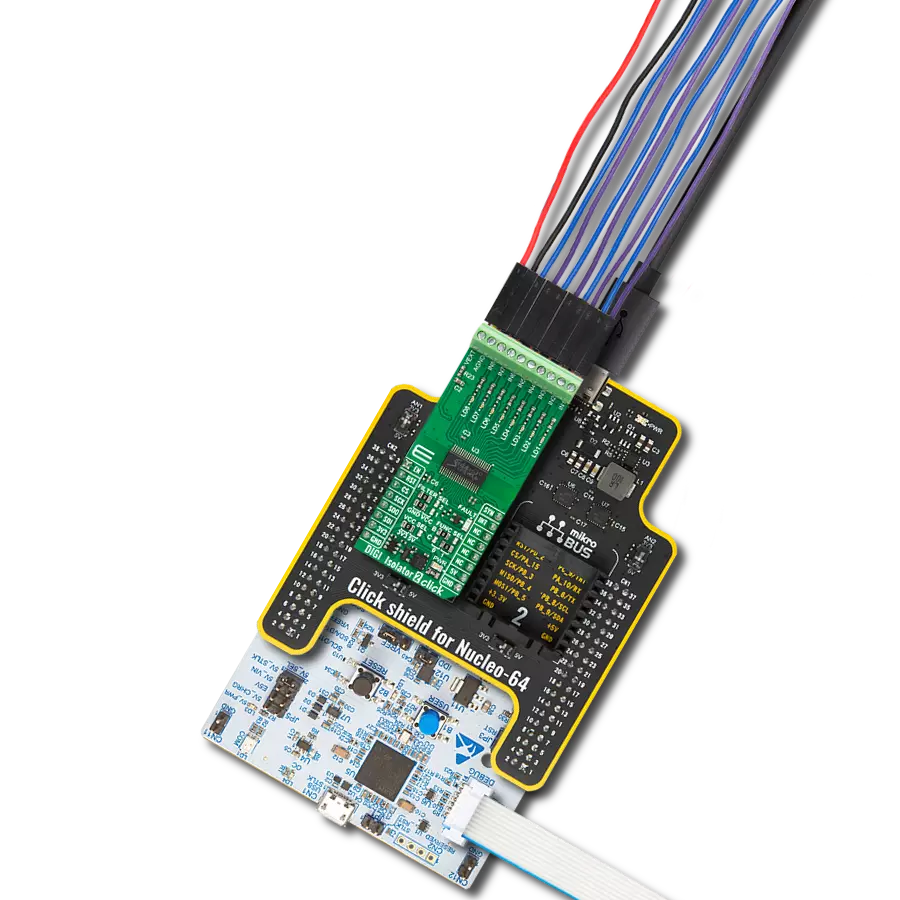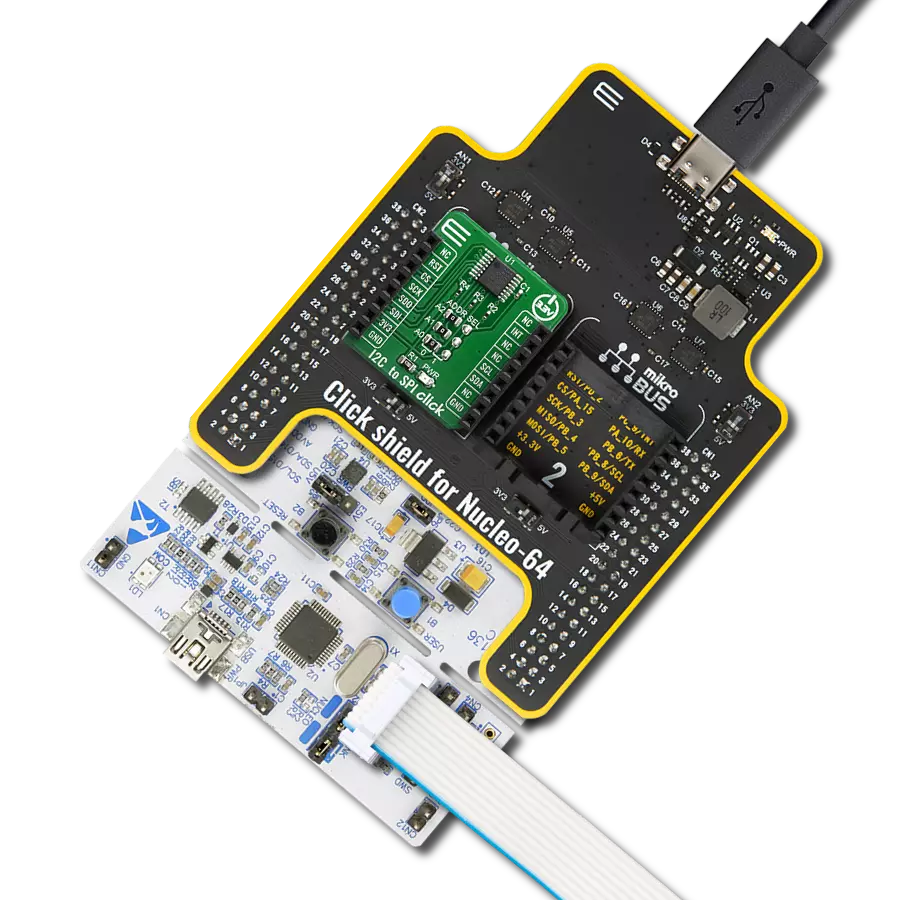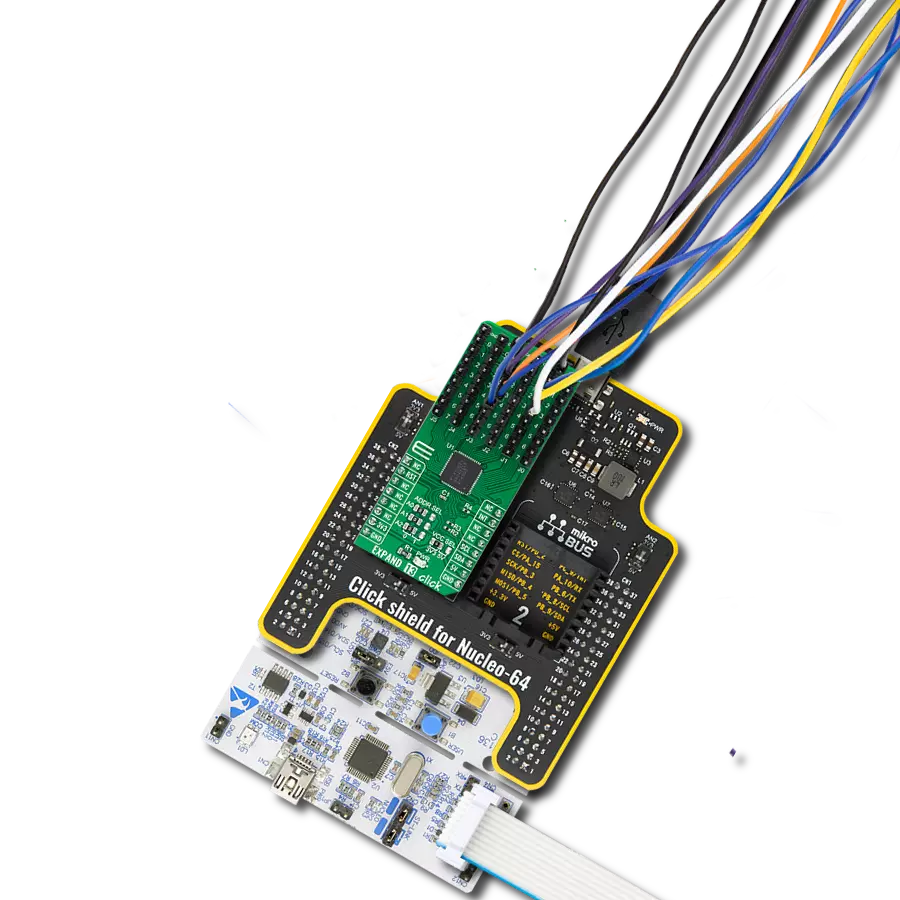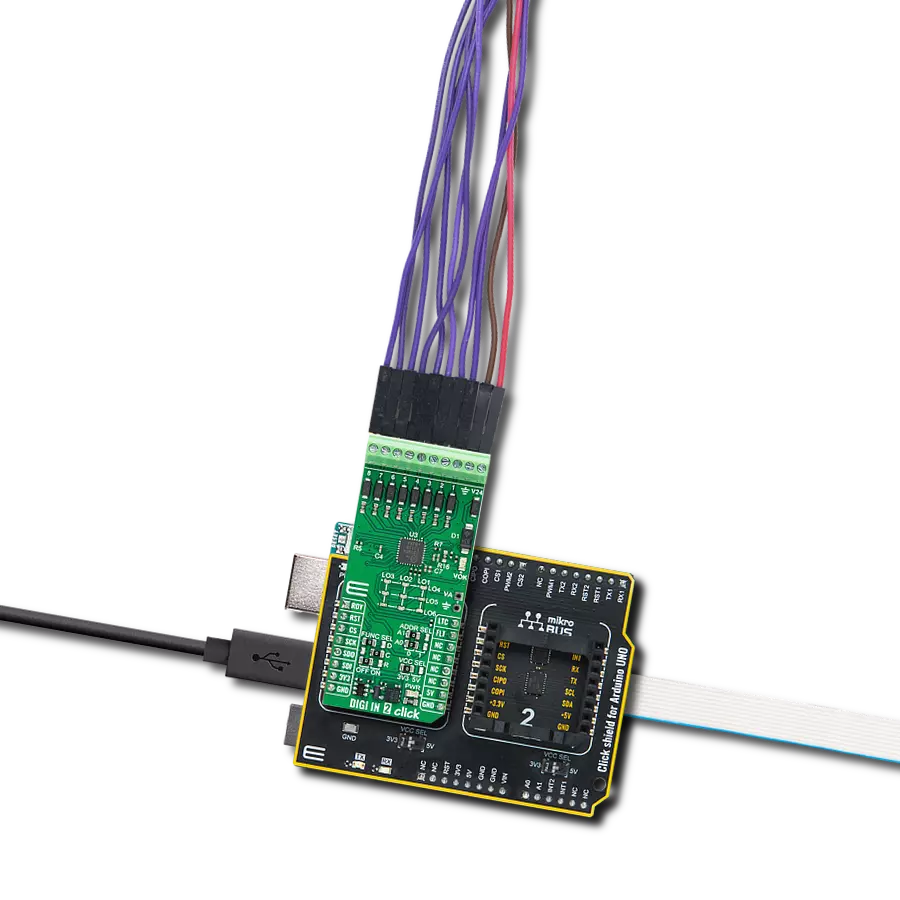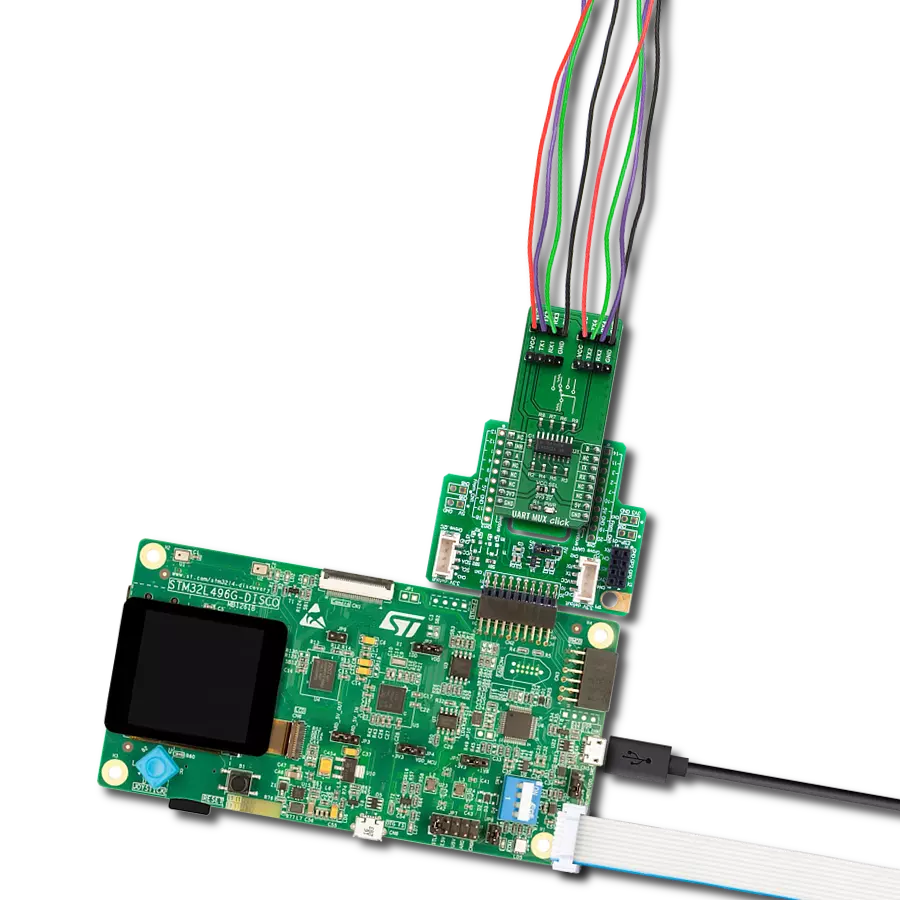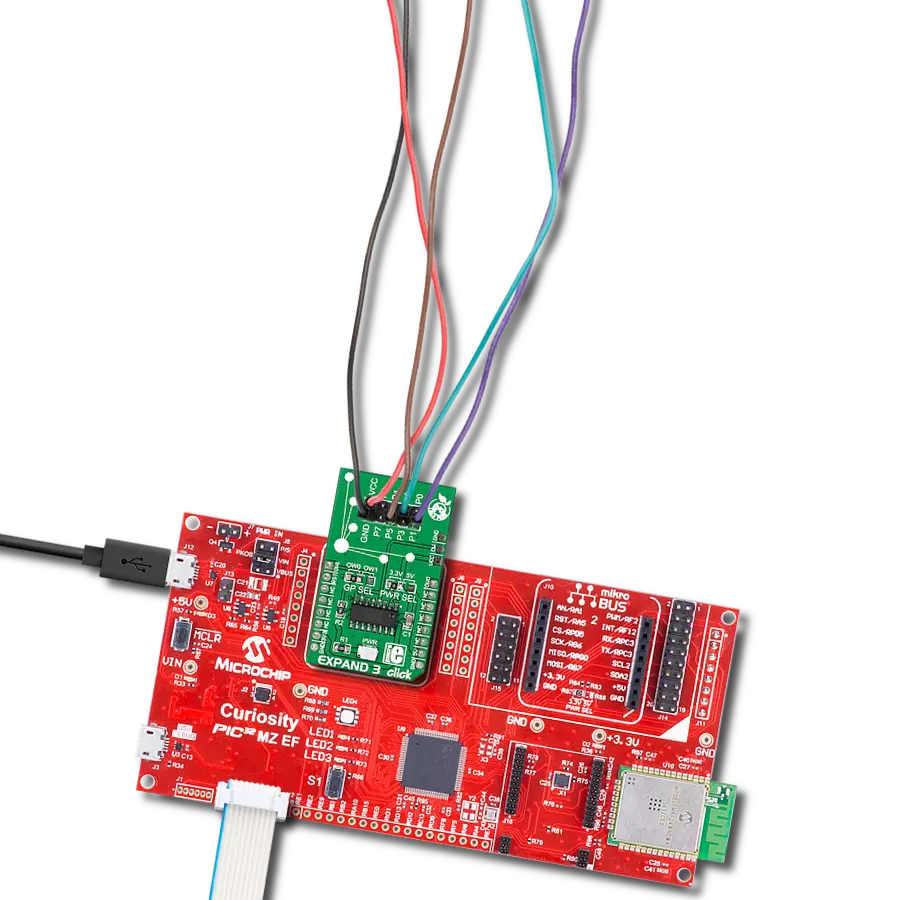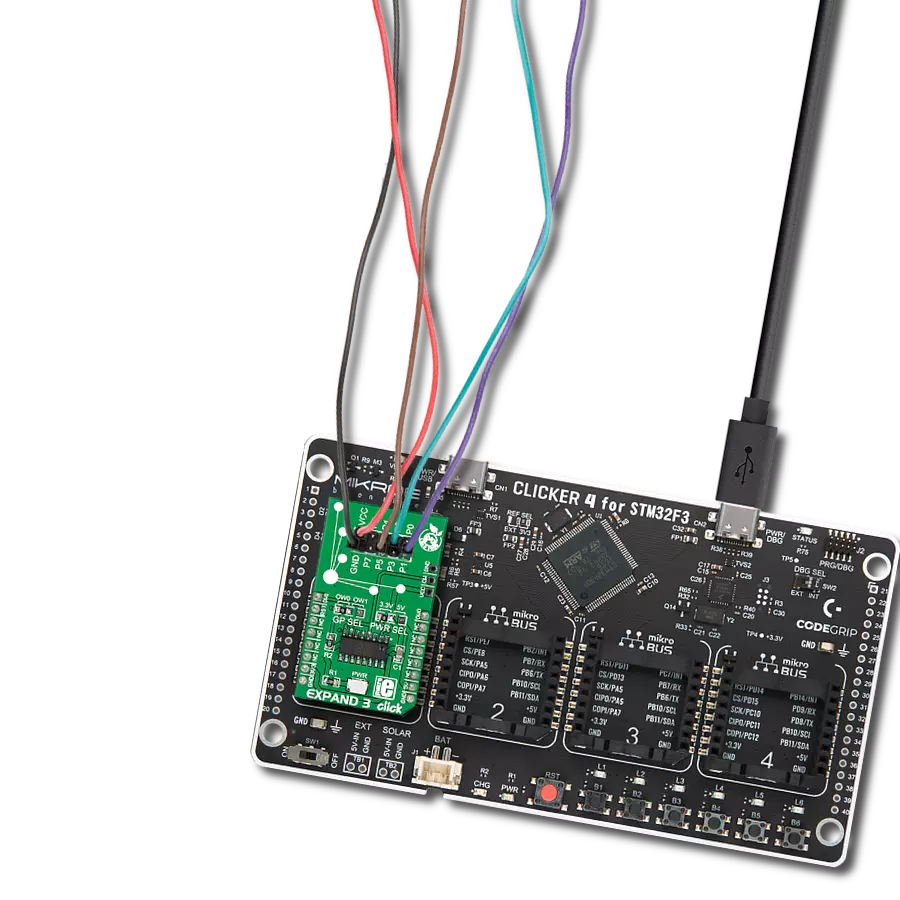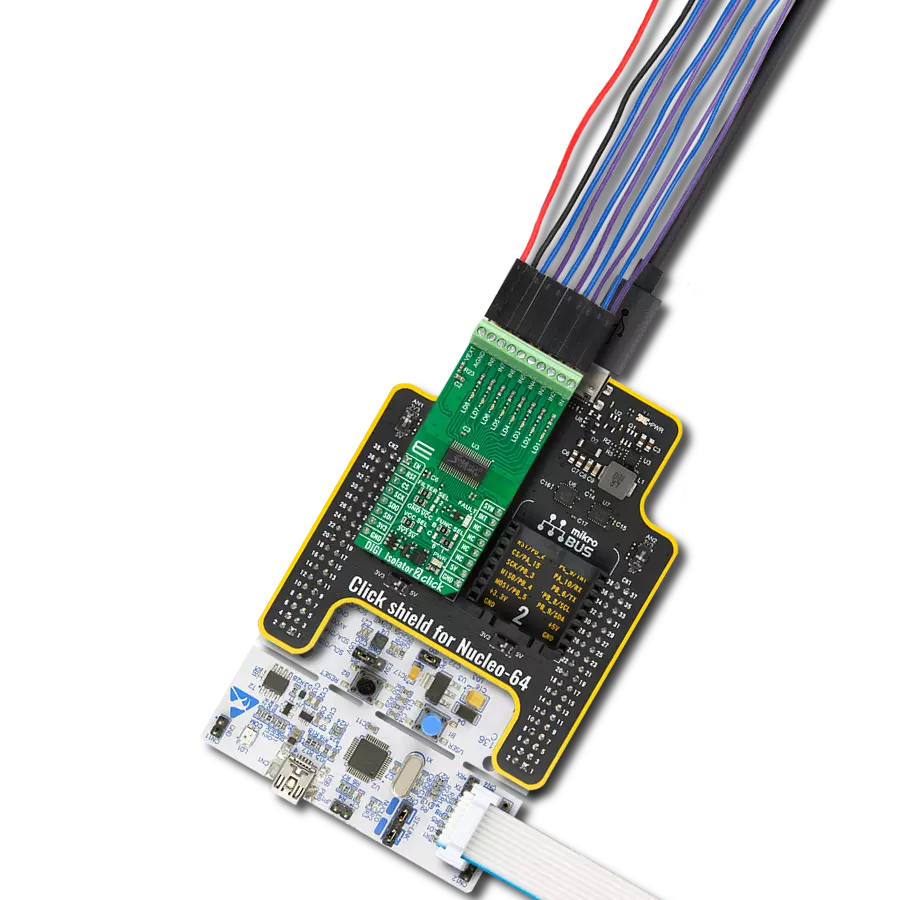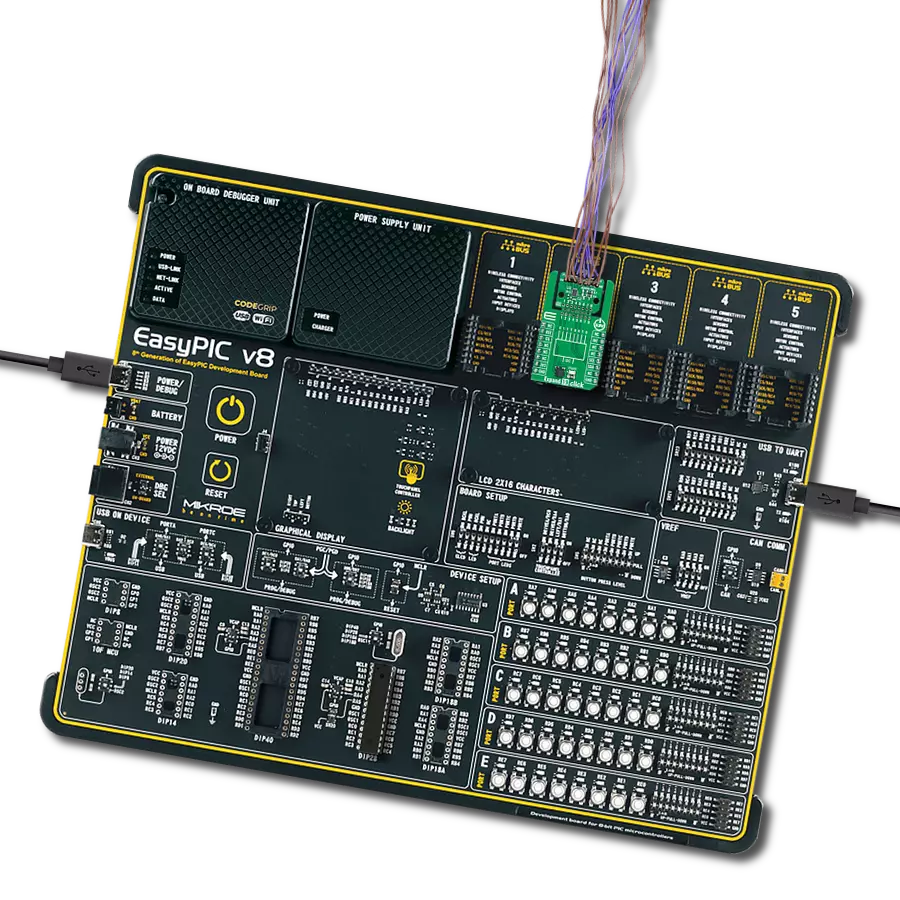Enhance your data acquisition and signal processing systems with our analog multiplexer solution, enabling precise selection and routing of analog inputs to optimize data analysis
A
A
Hardware Overview
How does it work?
Analog MUX 2 Click is based on the ADG728, a low voltage, CMOS 8-channel analog matrix switch with a serially controlled 2-wire interface from Analog Devices. The ADG728 can operate equally well as a multiplexer, demultiplexer, or switch array, providing more flexibility. It also features a low on-resistance closely matched between switches and is flat over the full signal range. During the Power-Up of the ADG728, all switching channels will be in the OFF condition, and the internal shift register will contain all zeros. All channels exhibit a ‘break-before-make’ switching action, preventing momentary shorting when switching channels. Each bit of the 8-bit serial word corresponds to one device switch. Internal switching channels are independently controlled by an individual bit, providing an option to activate
any, all, or none of the switches. All of the input channels of the multiplexer can be easily connected to a nine-pole spring action block terminal without having to use any additional tools, such as screwdrivers, while the output pin from the multiplexer is routed to the AN pin on the mikroBUS™ socket. Analog MUX 2 Click communicates with MCU using the standard I2C 2-Wire interface with a frequency of up to 400kHz. It also has two address pins (A0 and A1) programmed by the user to determine the value of the last two LSBs of the slave address, selected by onboard SMD jumpers labeled as ADDR SEL to an appropriate position marked as 0 and 1, allowing selection of the slave address LSBs. Also, this Click board™ has a Reset pin routed to the RST pin on the mikroBUS™ socket, which
clears the input register and turns all switches to the OFF condition. A new 8-bit word is written to the input shift register when changing the switch conditions. The ADG728 compares the state of switches from the previous write cycle to minimize glitches on its outputs. This can be achieved if the switch is already in the ON condition and is required to stay ON. This Click board™ can operate with either 3.3V or 5V logic voltage levels selected via the VCC SEL jumper. This way, both 3.3V and 5V capable MCUs can use the communication lines properly. Also, this Click board™ comes equipped with a library containing easy-to-use functions and an example code that can be used as a reference for further development.
Features overview
Development board
Nucleo 32 with STM32F031K6 MCU board provides an affordable and flexible platform for experimenting with STM32 microcontrollers in 32-pin packages. Featuring Arduino™ Nano connectivity, it allows easy expansion with specialized shields, while being mbed-enabled for seamless integration with online resources. The
board includes an on-board ST-LINK/V2-1 debugger/programmer, supporting USB reenumeration with three interfaces: Virtual Com port, mass storage, and debug port. It offers a flexible power supply through either USB VBUS or an external source. Additionally, it includes three LEDs (LD1 for USB communication, LD2 for power,
and LD3 as a user LED) and a reset push button. The STM32 Nucleo-32 board is supported by various Integrated Development Environments (IDEs) such as IAR™, Keil®, and GCC-based IDEs like AC6 SW4STM32, making it a versatile tool for developers.
Microcontroller Overview
MCU Card / MCU

Architecture
ARM Cortex-M0
MCU Memory (KB)
32
Silicon Vendor
STMicroelectronics
Pin count
32
RAM (Bytes)
4096
You complete me!
Accessories
Click Shield for Nucleo-32 is the perfect way to expand your development board's functionalities with STM32 Nucleo-32 pinout. The Click Shield for Nucleo-32 provides two mikroBUS™ sockets to add any functionality from our ever-growing range of Click boards™. We are fully stocked with everything, from sensors and WiFi transceivers to motor control and audio amplifiers. The Click Shield for Nucleo-32 is compatible with the STM32 Nucleo-32 board, providing an affordable and flexible way for users to try out new ideas and quickly create prototypes with any STM32 microcontrollers, choosing from the various combinations of performance, power consumption, and features. The STM32 Nucleo-32 boards do not require any separate probe as they integrate the ST-LINK/V2-1 debugger/programmer and come with the STM32 comprehensive software HAL library and various packaged software examples. This development platform provides users with an effortless and common way to combine the STM32 Nucleo-32 footprint compatible board with their favorite Click boards™ in their upcoming projects.
Used MCU Pins
mikroBUS™ mapper
Take a closer look
Click board™ Schematic

Step by step
Project assembly
Software Support
Library Description
This library contains API for Analog MUX 2 Click driver.
Key functions:
analogmux2_set_channel- Analog MUX 2 set channel functionanalogmux2_read_an_pin_value- Analog MUX 2 read AN pin value functionanalogmux2_read_an_pin_voltage- Analog MUX 2 read AN pin voltage level function
Open Source
Code example
The complete application code and a ready-to-use project are available through the NECTO Studio Package Manager for direct installation in the NECTO Studio. The application code can also be found on the MIKROE GitHub account.
/*!
* @file main.c
* @brief AnalogMux2 Click example
*
* # Description
* This application controls the multiplexing of a single input channel
* with an eight-channel matrix switch.
*
* The demo application is composed of two sections :
*
* ## Application Init
* Initializes I2C and ADC driver, set Vref, STM32F407ZG - 2.048 V, PIC18F97J94 3.3 V,
* set the default configuration and start to write log.
*
* ## Application Task
* This is an example that shows the use of a Analog MUX 2 Click board.
* In this example, we switch from channel AN0 to channel AN7,
* read and display the analog value and voltage on the active channel.
* Results are being sent to the Usart Terminal where you can track their changes.
*
* @author Nenad Filipovic
*
*/
#include "board.h"
#include "log.h"
#include "analogmux2.h"
static analogmux2_t analogmux2;
static log_t logger;
void application_init ( void ) {
log_cfg_t log_cfg; /**< Logger config object. */
analogmux2_cfg_t analogmux2_cfg; /**< Click config object. */
/**
* Logger initialization.
* Default baud rate: 115200
* Default log level: LOG_LEVEL_DEBUG
* @note If USB_UART_RX and USB_UART_TX
* are defined as HAL_PIN_NC, you will
* need to define them manually for log to work.
* See @b LOG_MAP_USB_UART macro definition for detailed explanation.
*/
LOG_MAP_USB_UART( log_cfg );
log_init( &logger, &log_cfg );
log_printf( &logger, "\r\n" );
log_info( &logger, " Application Init " );
// Click initialization.
analogmux2_cfg_setup( &analogmux2_cfg );
ANALOGMUX2_MAP_MIKROBUS( analogmux2_cfg, MIKROBUS_1 );
// Vref STM32F407ZG
analogmux2_cfg.vref = 2.048;
err_t init_flag = analogmux2_init( &analogmux2, &analogmux2_cfg );
if ( init_flag == I2C_MASTER_ERROR ) {
log_error( &logger, " Application Init Error. " );
log_info( &logger, " Please, run program again... " );
for ( ; ; );
}
analogmux2_default_cfg ( &analogmux2 );
log_info( &logger, " Application Task " );
log_printf( &logger, "-------------------------\r\n" );
Delay_ms ( 100 );
}
void application_task ( void ) {
for ( uint8_t ch_pos = ANALOGMUX2_SET_CHANNEL_0; ch_pos <= ANALOGMUX2_SET_CHANNEL_7; ch_pos++ ) {
analogmux2_set_channel( &analogmux2, ch_pos );
Delay_ms ( 1000 );
Delay_ms ( 1000 );
Delay_ms ( 1000 );
uint16_t analogmux2_an_value = 0;
log_printf( &logger, " CHANNEL : AN%u \r\n", ( uint16_t ) analogmux2_get_channel( &analogmux2 ) );
log_printf( &logger, "- - - - - - - - - - - - - \r\n" );
if ( analogmux2_read_an_pin_value ( &analogmux2, &analogmux2_an_value ) != ADC_ERROR ) {
log_printf( &logger, " ADC Value : %u\r\n", analogmux2_an_value );
}
float analogmux2_an_voltage = 0;
if ( analogmux2_read_an_pin_voltage ( &analogmux2, &analogmux2_an_voltage ) != ADC_ERROR ) {
log_printf( &logger, " AN Voltage : %.3f V \r\n", analogmux2_an_voltage );
}
log_printf( &logger, "-------------------------\r\n" );
}
}
int main ( void )
{
/* Do not remove this line or clock might not be set correctly. */
#ifdef PREINIT_SUPPORTED
preinit();
#endif
application_init( );
for ( ; ; )
{
application_task( );
}
return 0;
}
// ------------------------------------------------------------------------ END
Additional Support
Resources
Category:Port expander



